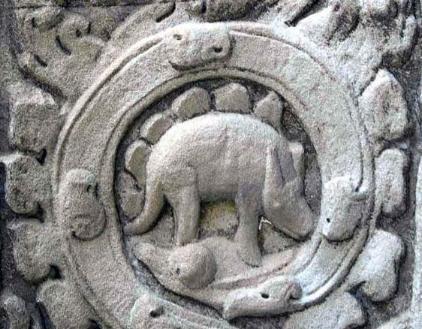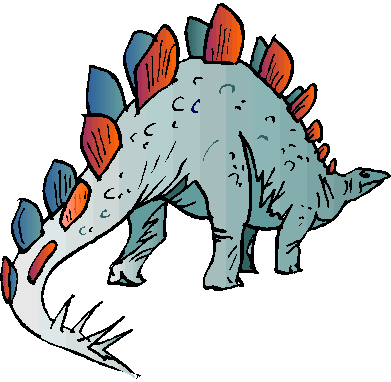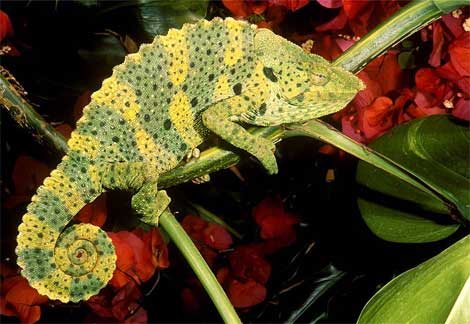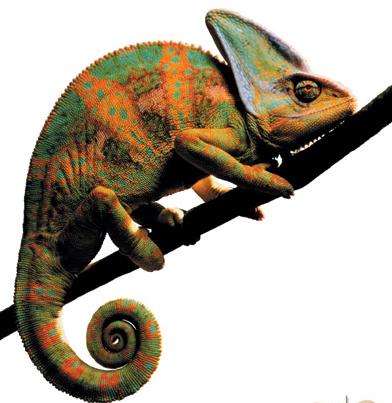Feb 19 2008
Ancient Cambodian Stegosaurus?
Any bit of nonsense can be used to derive some general observations about logical fallacies, scientific methodology, and faulty thinking. So sometimes I like to take a poke at more lighthearted silliness, and also I love dinosaurs (I have always been partial to stegosaurus in particular) and pointing out creationist illogic is one of my favorite hobbies. So how could I resist this gem – the claim in www.bible.ca that an ancient Cambodian temple at Angkor contains a carving of a stegosaurus.
There are many preserved reliefs of various animals on the surviving temple walls. One of them depict this curious creature. 
The author believes that this is a depiction of a stegosaurus. In a section headed “let’s do some science” he argues:
A few skeptics have based their objections on anatomical differences between popular Stegosaurus restorations and the Cambodian sculpture. The fact that the average Jr. High student immediately identifies the sculpture as a Stegosaurus is considered of no consequence. “The head is too large Stegosaurs had no horns or frills on the head” The sculpture has no spikes on the tail… Therefore, they conclude that the sculptor never saw a Stegosaurus.
One is tempted to respond to these claims by pointing out that our modern restorations involve some guess work, that Stegosaurs may have exhibited a significant amount of anatomical variety (like dogs), that a view of tail spikes may well be blocked by the surrounding stone circle, etc., etc. However, this line of reasoning focuses the discussion on the wrong issue. The relevant question is not, Can you find anatomical differences with today’s popular restorations? Rather, the real question is, What kind of sculpture would be produced by an artist who remembered seeing a Stegosaurus?
Is it the “wrong issue” to point out the anatomical difference? Not at all – they bear directly onto the actual relevant scientific question. Are there any details in the picture that are specific to a stegosaurus – that would distinguish it from other similar animals, a type of lizard, for example? This type of reasoning is common in medicine – we do not make a specific diagnosis based upon vague or common symptoms. We look for signs, symptoms, or laboratory abnormalities that are specific to the diagnosis in question. The more specific the better.
Here is a picture of a stegosaurus:

Those details that would allow us to make a specific diagnosis of stegosaurus are missing from the temple relief. There are no spikes on the tail, there are not two rows of back plates, and the shape of the plates are not correct. Also, when looking at a stegosaurus a feature that immediately sticks out is the almost ridiculously small head that is very low to the ground. If an artist wanted to capture the essence of a stegosaurus getting the head right would be crucial. Look at the other animals depicted on the temple walls – they are very recognizable. So obviously the temple artists had sufficient skill and the artistic tradition used was one of fairly accurate depiction.
The author, however, does not want to ask the correct question – is there anything in the image specific to a stegosaurus. Because that question comes up with the “wrong” answer. He dismisses the lack of details by saying that perhaps this was a different species of stegosaurus. This if not unreasonable – this was a group of dinosaurs, not a single species. But they all have that characteristic small head – lacking in this picture. So this hypothesis does not account sufficiently for the differences between this picture and the anatomy of a stegosaurus, and is therefore just an example of special pleading.
The question he wants to ask is this: “What kind of sculpture would be produced by an artist who remembered seeing a Stegosaurus?” This is a fair question. We can infer from the other reliefs that the temple artist/s would have been very accurate, unlike this picture. But the author engages in an absurd exercise. He asks art students to draw a stegosaurus from memory, arguing that this would allow us to infer what an artist drawing a stegosaurus from memory would produce. Take a look at the pictures. Some are downright wrong, from which I would conclude that those students just don’t know what a stegosaurus is. But many of the pictures are far better than the temple relief. They show tail spikes, the characteristic small head, and appropriately shaped back plates. Artistically they are perhaps not as good as the temple relief, but they show specific details the relief lacks. And yet the author concludes that the temple carving is better than the art students’ drawings. He concludes: “Prejudice has the power to makes us look awfully ridiculous.” How true.
Also, keep in mind that he is arguing the temple artist saw a live stegosaurus. That would make more of an impression than perhaps seeing the skeleton of one at a museum or a reconstruction.
The author also fails to ask another very fundamental question – does the picture look like anything other than a stegosaurus. (Could this patient have a different diagnosis to explain the symptoms we see?) This is always a good – even necessary – question in science. Take a look at these pictures of chameleons:


Ding, ding, ding, ding, ding! I think we have a winner. At the very least we can conclude that the temple relief looks much more like a chameleon than a stegosaurus. The head is a much better fit, the tail lacks spikes, and the back even has ridges. There are lots of species of chameleons, and there may be one that fits even better than these examples I found. Of course, every argument you can bring to bear to say that the picture is not a good fit to a chameleon applies even more to the stegosaurus hypothesis. (Any readers who can find a better species fit, let me know.) Of note, the word “chameleon” does not appear on the bible.ca website.
We could also get into the notion of probability – the fact that there is no evidence for the survival of stegosaurus in the last 140 million years.
So what general lessons do we derive from this example? Working backwards from a desired conclusion can and will produce all manner of twisted logic. One can bias the conclusions reached by choosing the questions to ask – rather than asking the correct questions. And when trying to make the correct diagnosis reliably, details matter. Those details that are more specific are more useful than those that are vague or nonspecific.
Oh, and dinosaurs are cool and creationists are terrible pseudoscientists.






